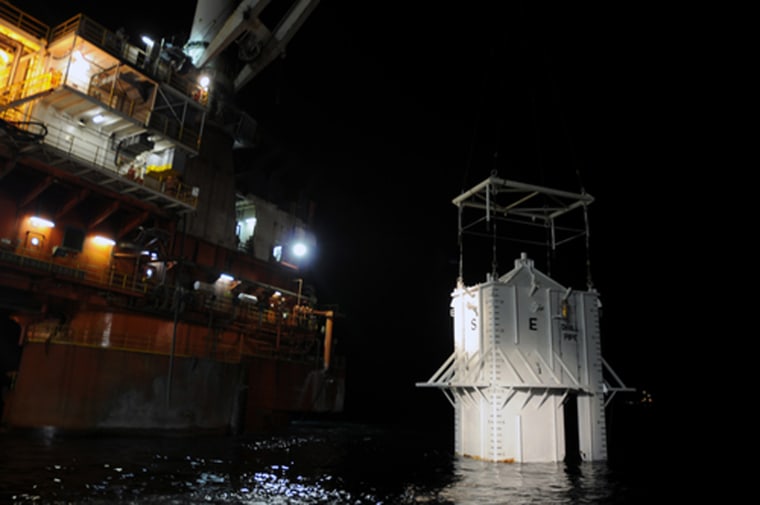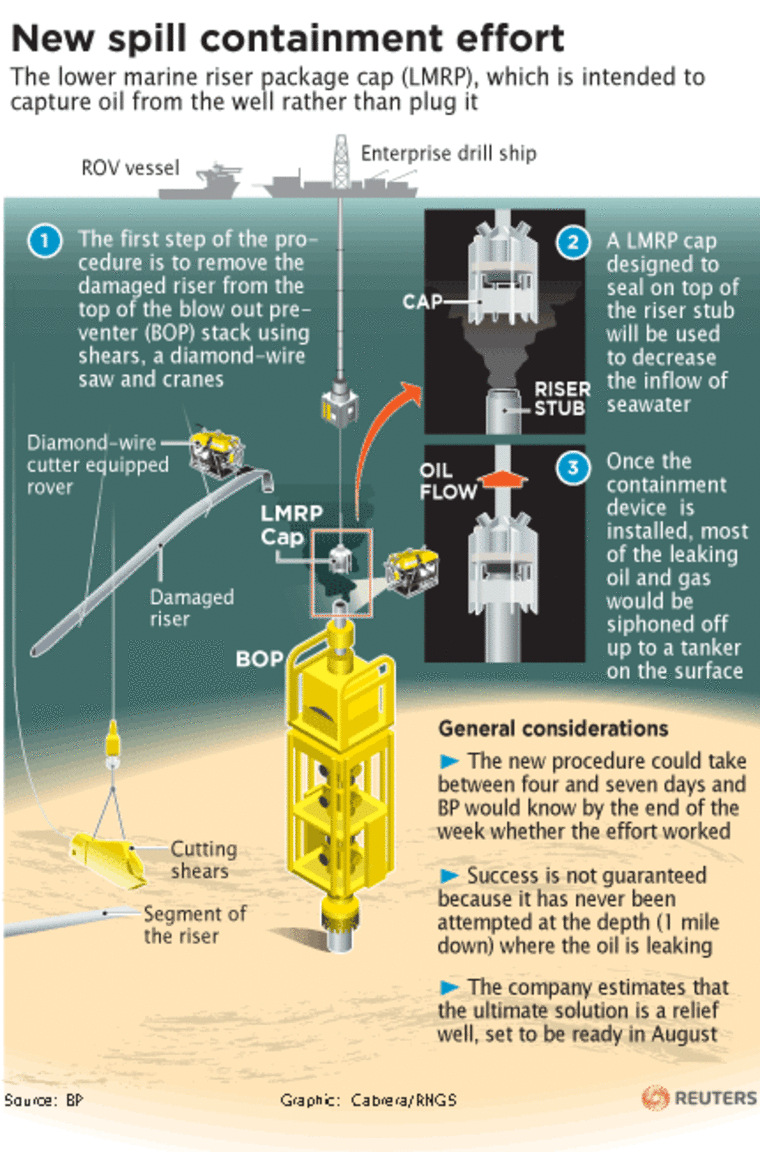"Top kill." "BOP." "Junk shot." The Gulf oil spill has introduced some interesting vernacular from the world of offshore oil drilling. Below's a quick guide and an update on the latest efforts to contain the spill.
Blowout preventer or BOP
A large set of valves and pipes that sits atop a well and is designed to control the flow of oil and gas. In the event of a blowout or other malfunction, the BOP is supposed to slam shut to prevent a spill. In the deepwater Horizon incident, the five-story-tall BOP failed to close after the fatal blowout destroyed the oil rig, killing 11 workers. Investigators are focusing on the reported formation of a bubble of methane gas in the well and concrete work performed at the wellhead shortly before the blowout. In addition to pressure sensors, some blowout preventers contain acoustic sensors that can trigger the BOP's shutoff valves. The Deepwater Horizon BOP didn't have that piece of equipment.

Junk shot
A maneuver designed to clog the blowout preventer and stanch the leak by shooting golf balls, scraps of rubber, knotted rope and other material into the BOP's valve structure. BP tried a junk shot in conjuction with the "top kill," but neither procedure managed to stop the flow of oil. There was some concern that the junk shot could make the spill worse by further wrecking the BOP.
LMRP
The lower marine riser package (LMRP) is BP's latest attempt to contain the leak. Over the next several days, robots armed with metal shears and a diamond-edged saw will cut away the damaged riser pipe, cap it, and place a rubber-sealed containment dome above the BOP to siphon as much oil as possible. Warm water will be pumped down to the LMRP to prevent the formation of ice crystals. Officials have warned it could take several days to see if the LMRP works and that slicing the riser could temporarily increase the flow of oil by as much as 20 percent. Even if the maneuver works, it's unlikely to trap all the leaking oil.

Relief well
An emergency well designed to intercept the leaking well and allow cement to be pumped in to seal the leak is seen as the best chance to stop the Gulf spill. BP began drilling two relief wells shortly after the Deepwater Horizon disaster but does not expect to finish them until sometime in August. They are currently at drilling depths of 8,000 to 12,000 feet. A relief well was used to cap an offshore leak last year off Australia but that spill occurred in much shallower water and the leaking well was a bigger target than the well pipe BP is attempting to intercept.

Riser insertion tube
A siphon inserted into the leaking riser pipe to help collect oil and gas and transport it to surface ships. The insertion tube is fitted with gaskets meant to slow the flow of oil around the pipe. BP says it is collecting about 2,000 barrels of oil a day through the riser insertion tube.
Subsea dispersant
Chemicals released at the leak site to break up the oil and prevent it from reaching the surface in greater volume. The EPA has ordered BP to cut back its use of dispersant given concerns about the environmental impact of chemicals being used in unprecedented amounts.
ROV
Remotely operated vehicles or ROVs are used to perform work at depths too extreme for humans. ROVs have been used to send back video of the Gulf leak, attempt to force the BOP closed and install (and remove) containment equipment. ROVs are operated by workers at the surface through long tethers.
Top hat
A smaller dome used to contain leaks in the Deepwater Horizon's riser pipe. The top hat's smaller size means the formation of methane ice crystals is less likely. A top hat may be tried on the main leak if other attempts to stop it fail.
Top kill
A procedure aimed at capping a leaking well by forcing heavy drilling liquid, or mud, down the riser, through the BOP and into the well. If the mud can overcome the flow of oil, the well can be sealed off with concrete. BP began a top kill attempt May 26 but was forced to abandon it after oil continued to overwhelm the flow of mud, golf balls, rubber scraps and other "junk shot" materials. The procedure had never been tried at such depths.